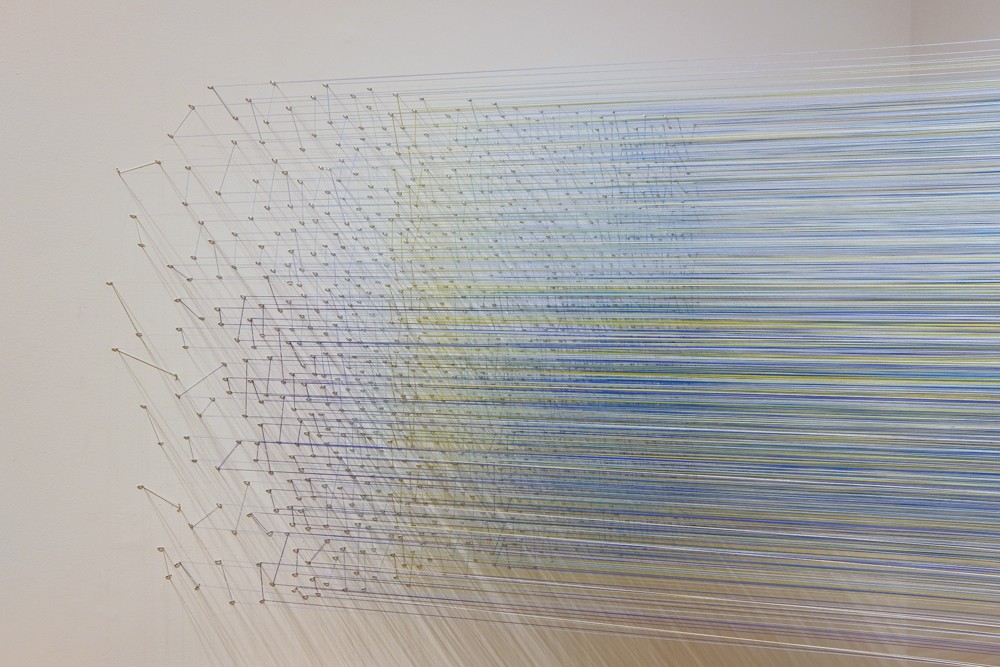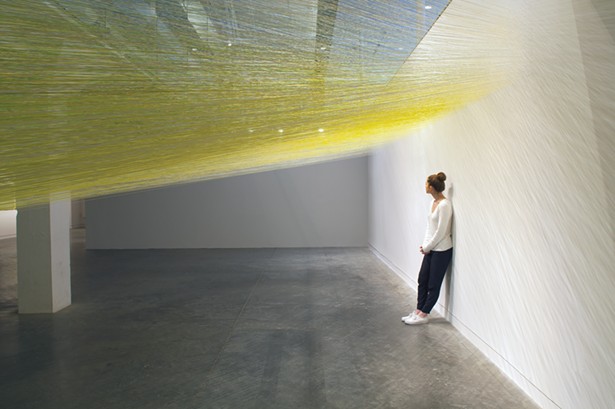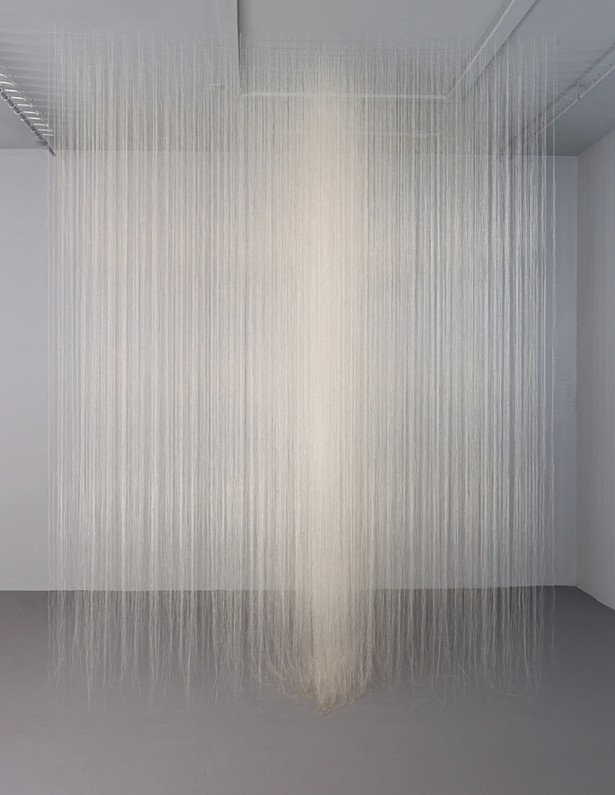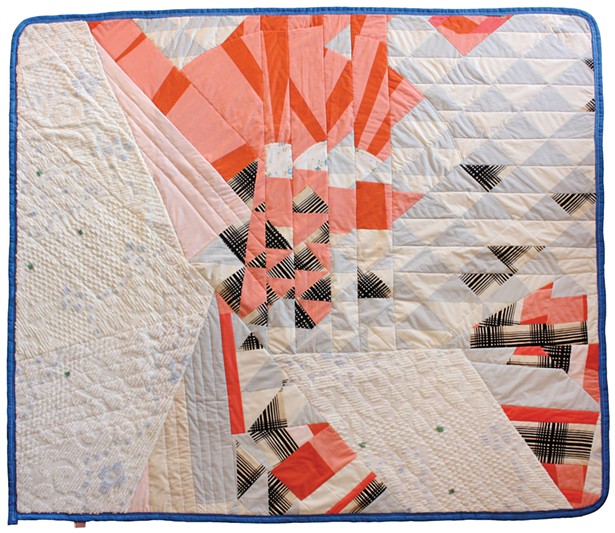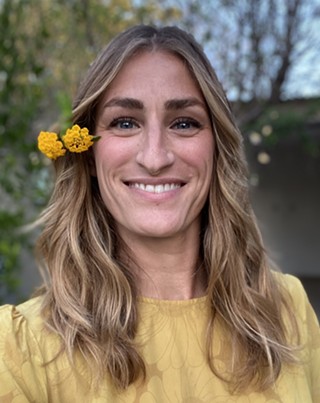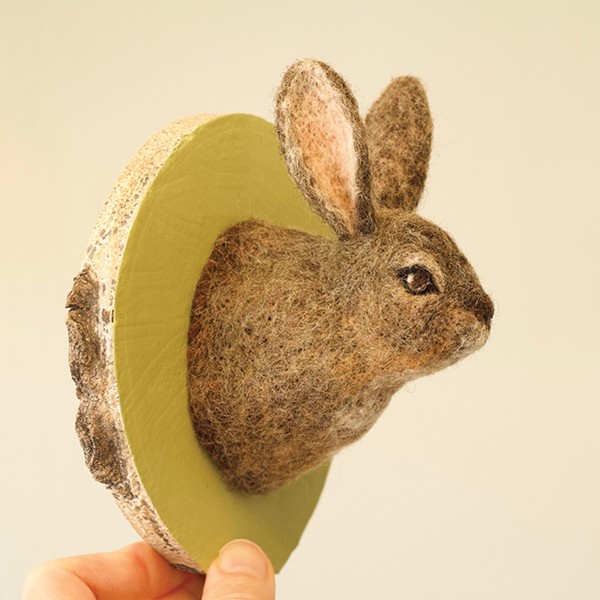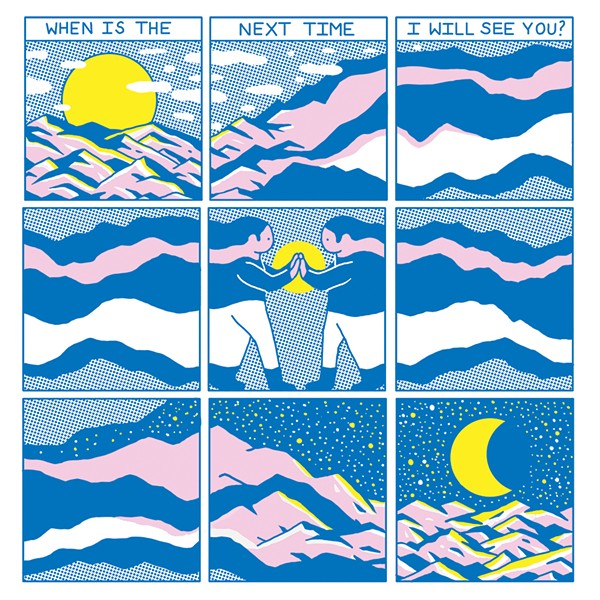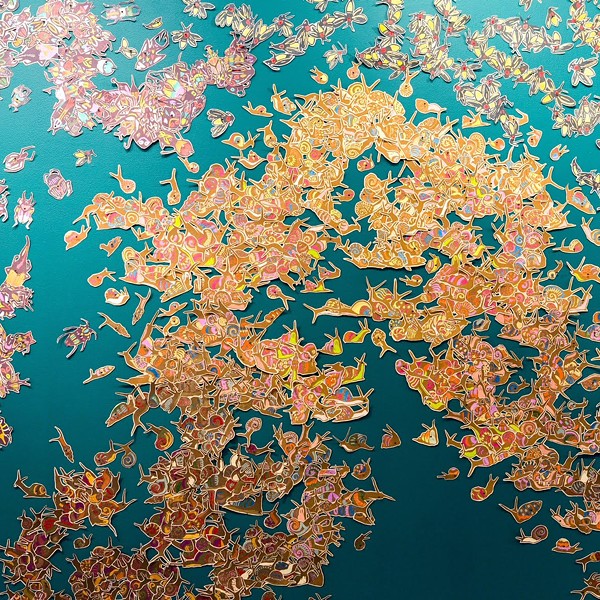When I set out to write this piece on women fiber artists in the Hudson Valley, I didn't recognize the brazen naivete of my quest. Fiber is not like paint—it is not a single material. It is terrycloth and leather, polyester batting and velvet, microfiber, fur, wool roving, cotton thread, raw silk, muslin, burlap, tulle. And that is just a sampling of what artists in this "medium" are working with to create sculpture and three-dimensional drawings, site-specific installations, and wall-mounted works. I tried to find a through line with the historical aspect of women's fiber and textile crafts, but some were rejecting it, some were carrying the torch, and some were indifferent. So rather than try to find a neat container that encompasses this beautiful gamut of creators, I would rather simply say: Behold these splendid, talented artists creating utterly distinctive and beautiful work that makes use of fiber.
—Marie Doyon
Anne Lindberg
While many artists who work with fiber consider their work sculptural, Anne Lindberg uses thread to create three-dimensional drawings in space. In her luminous, site-specific installations, she uses fine colored threads pulled tautly to create abstract drawings that physically modify the space—bisecting rooms, hovering overhead, filling up corners. "The work is grounded in the basic act of drawing, marking the path and distance between two points," Lindberg says. "Thousands of lines of thread are cast across surfaces and through space to create hovering clouds of color and light and complex fields of lines." Lindberg favors chromatic thread for its delicate yet flexible nature, and its chameleon quality under different lighting conditions. "My installations respond to and amplify attributes of their environments in order to directly engage the body and affect how space is navigated and perceived," says Lindberg, whose labor-intensive process draws from her study of textiles. "I am interested in materiality and its transcendence through the assembly and simultaneity of individual elements. Optical and atmospheric phenomena is achieved, yet in the end, the works feel almost immaterial, like light and color itself."
Liz Collins
Liz Collins comes from a family of crafters. "My dad, mom, some of my grandparents, my aunt, and others were all into making things in various capacities and these soft materials that held color and had texture, malleability, and all kinds of other exciting features were an automatic draw for me as a creative person," she says. "It was never a question, but rather an instinct." Collins is drawn to a broad range of fibers from organic materials like silk, linen, alpaca, and angora to shiny, happy, drapey rayon yarn to plastic and metallic materials with high-tech compositions. "I will use anything," she says simply, though she tries to limit her consumption, using deadstock and materials on hand. When asked how she categorizes her work, Collins replies, "There have been so many artists who have worked in fiber without the specificity of that distinction. I do think sometimes it can bog down the work with a sort of stigma." She explores a broad range of themes in her work from decay to eroticism, space to spirituality, and playful dualities like chaos/order, opacity/transparency, pleasure/pain, darkness/light, loose/tight. "Fiber and textiles often inspire the work and inadvertently materialize these themes," Collins says. "It can sometimes be a chicken-and-egg situation." For her, there is no connection between gender and materials. While Collins feels a certain kinship with the legacy of women who have worked in textiles, she rejects any outright connection. "I get the 'whole woman's work' thing, and, of course, feel an affinity, but I also completely disagree with it and find it problematic because it's too narrow a way to see this world of materials and media that have existed in some capacity for as long as time, across genders," she says.
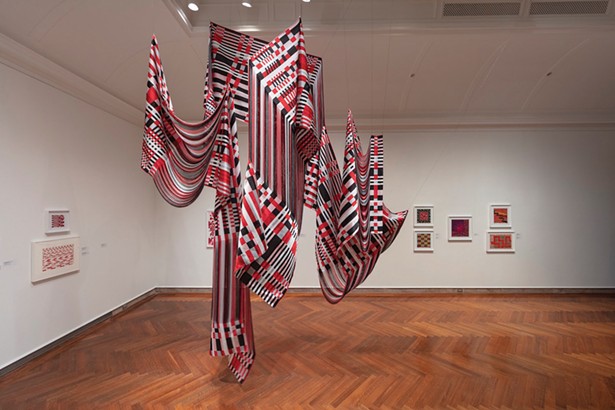
Millicent Young
Millicent Young makes use of clay, steel, lead, glass, plaster, wood, animal fur, and horsehair to create dynamic sculptures that seem at once peacefully still and in motion. She chooses these fibers for their ghostly familiarity. "Horse hair is beautiful and unsettling," Young says of the primary fiber she employs in her work. "Though dead, in my work it becomes sensuous and animated by the light and air it gathers. It is not quite human—though it could be. It is kin; it is memory. It is a strand of life, metaphorically and literally, as DNA. It is fragile and enduring, a part of a whole." The artist harvests fur from the brushing of her domestic animals and horse tail hair by the pounds from a cowboy shop in the Northwest. She ties many tiny bundles of hairs to sewing thread to create ethereal strands up to 13 feet long. "In the ways that I work with all my materials, I bring the lineage of being woman into a larger vocabulary of complexity," Young says. "I am working with accretion, the whole emerging through the relationship of thousands of parts, the stillness and depth that comes through repetition, piercing and connecting, layering material and meaning. I work not toward answers but towards presence and sensorial knowing. Being at the edges of unknowing, where coherence and dissolution co-occur and a space is created for new forms—these are of interest to me."
Toni Brogan
Evocative range is one of fiber's big draws for Toni Brogan. "If you knit something, then crochet something, then weave something using the same fiber, it will give you three different results," says Brogan, who often incorporates multiple techniques into a given piece. While similar things could be said of other media, the utter textural and dimensional transformation possible with fiber when different techniques are applied is perhaps unique. Brogan returns again and again to natural materials: raw hemp, jute, and cotton ropes, which take dye really well, allowing her to play with a range of color palettes. "I love the natural roughness of hemp and jute, the wiry unruliness appeals to my no-holds-barred style of working," she says. "It's like throwing something up at a wall and seeing what sticks!" Her current work uses utilitarian objects as the bases for her looms, encouraging sculptural play. Like Ford, Brogan makes use of the familiar—though not conceptually, but representationally. Her upcoming solo show "Chromatic Family," set to open in January at Roxbury Arts Group, "is an ode to family, dysfunction, estrangement, and death," and includes clothing items corresponding to her siblings.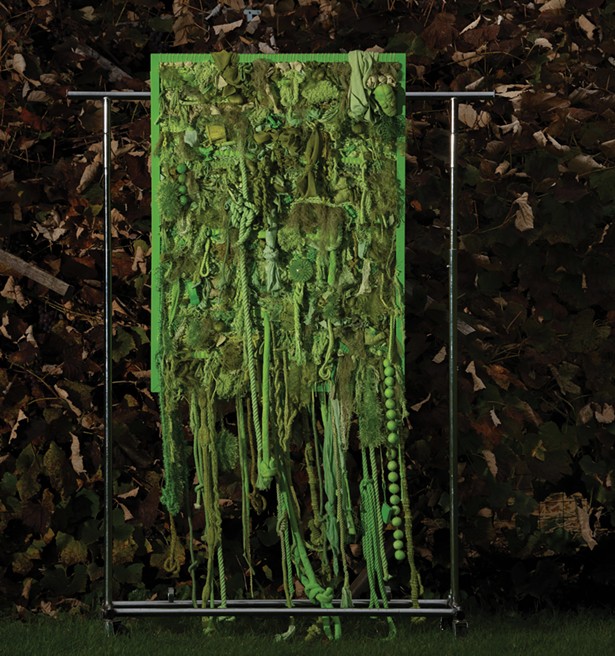
Katie Ford
For artist Katie Ford, fiber is a useful material in her repertoire for its pervasiveness and evocative familiarity. "Fabric clothes our bodies, adds texture to our homes, it's integrated into how we move through the world," Ford says. "Incorporating textiles in my work is a way to explore human experience and relationships through materiality." Textiles and fiber offer a guise of abstraction for the exploration of interpersonal dynamics, while also being inextricably connected to the most intimate quotidian facets of our lives from sleeping and getting dressed to drawing the curtains. "Fabric brings up human associations regardless of imagery, and this wash of familiarity is significant to how I investigate the themes in my work," Ford says. While gender identity isn't a central theme to her work or material choice, Ford does admit that the use of fiber begets an ongoing contemplation of the age-old distinction between art and craft. "I consider my practice to be mixed media—moving between print, textiles, paper, wood, installation, sculpture. I don't see why my practice should need to sit neatly in just one of these areas," she says. "I find it energizing to blur the divides between media, which pulls at the threads of historical power dynamics wrapped up in those divides."
Kat Howard
"My pieces either have a physicality to them that feels almost human, or they are expressionist representations of landscapes where the body is noticeably absent," says Kat Howard, who employs what she calls "a raw, direct approach to narrative and an emphasis on the sense memory we all have with textiles." Howard's material choices are integral to her artistic concept—a tactile language—and she uses whatever is most eloquent for the occasion, her materials ranging from silkworm cocoons and microfiber tubes to handspun yarn, leather, and muslin. Her work is an intimate exploration of gender and gender roles, sexism, oppression, and the physical body. "I make fiber art that addresses the history of the persecution of the female body, through which, I interrogate my own identity as a survivor of violence against women," Howard says. "I use abstraction, the innate language of texture, and the repulsion/attraction of touch in my visual 'fiber poems' to capture the fight to break free from trauma." Howard's work is steeped in the history of labor-intensive textile crafts like weaving, both a continuation of the skills and an homage to those who came before. "You can't help but be floored by the hours, the precision, and the repetition that is necessary to execute an idea: All of these things are a powerful metaphor for women's work. There's strength in this quiet, fevered language."







